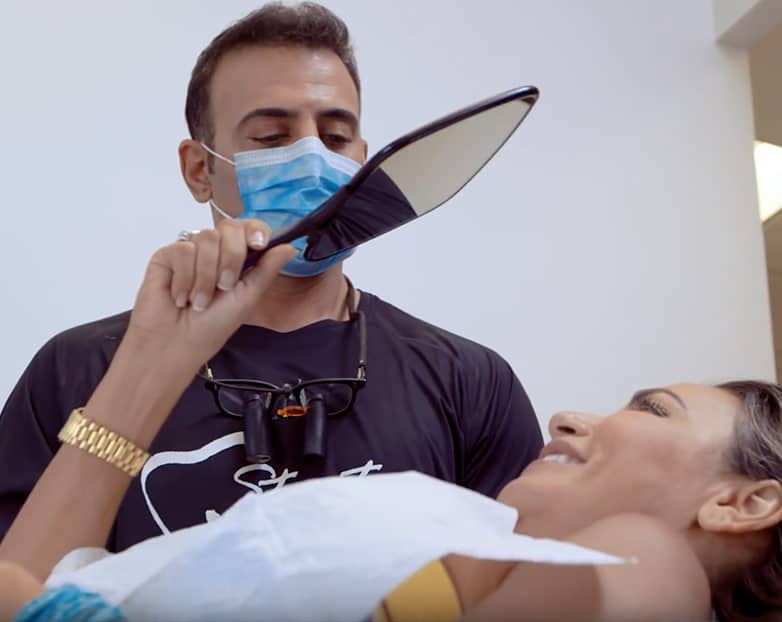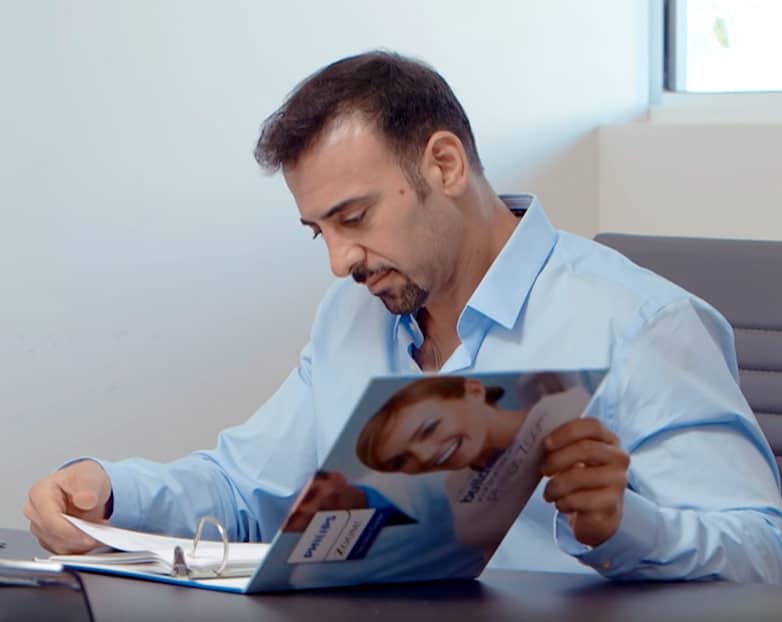SAME DAY DENTAL CROWNS FORT LAUDERDALE
A crown, also called a cap, is defined as an indirect (made outside the mouth) restoration that replaces the major part of a tooth. What that means is that when a tooth has suffered damage either through decay, breakage chipping or root canal therapy that involves more than one-third of the tooth, a filling is no longer suitable.
There is a huge difference between fillings and teeth crowns in terms of strength. What most people don't realize is that fillings actually weaken teeth, not strengthen them. The purpose of a filling is simply to fill a hole in a tooth much like spackle fills a hole in drywall with no strength. Could you imagine hanging a painting on a screw that was placed in spackle? Well, when you place in a filling that extends into a compressed functional part of the tooth, that is essentially what is happening. The filling actually draws strength from the remaining surrounding tooth structure which is why twice as much tooth as filling is required, and when fillings violate this ratio, you see cracking and breaking of the surrounding tooth structure. The result of this damage requires a more aggressive crown than the one that would have needed to be done in the first place. Consulting Dr. Robert B. Stanton who is a certified dental crown specialist in Broward County makes sense.
UNDERSTANDING DENTAL CROWNS
When a tooth suffers this level of damage, the tooth is numbed and prepared. Preparation for same day dental crowns involves reshaping the tooth to the proper height and shape so as to receive and support the crown that slips over and fits onto the tooth like two jigsaw puzzle pieces fitting together or a hand sliding into a custom-made glove. Traditionally and unfortunately in 95% of offices, the next step is to take a mold/impression of the prepped tooth to send off to the lab and then make a temporary crown that the patient wears for 2-4 weeks until the permanent crown comes back from the lab. Fortunately in our office, we provide our patients with same-day crowns and teeth crowns in Fort Lauderdale using CEREC technology.

Crowns can be made of several different materials. There is a wide range of monolithic (one layer) materials and layered materials that the dentist can choose from depending on the situation. Unfortunately, most dentists do not have a full understanding of the various materials' properties and therefore, they are "one trick ponies" that use the same material all the time in every situation no matter what the needs are of the specific tooth or teeth. .They cannot create exact esthetic matches and/or they experience functional failures from the wrong material being chosen for a complex bite situation. Also, the fact that the prepped tooth has been sitting for 2-4 weeks has allowed the precious collagen fibers of the tooth to dry out and they are now less receptive to the bonding agent that is used to bond the crown to the tooth. Dr. Stanton who is a dental crowns specialist in Fort Lauderdale offers the best-in-class solution for your chipped and cracked teeth.
In the past dentists used PFM crowns (porcelain-fused-to-metal) and one of the major disadvantages of these types of crowns is the “black-line” you often see at the gumline around the crown. Improved ceramic technology such as the CEREC milling system that Dr. Stanton uses allows us to fabricate what are known as all-ceramic crowns that are 100% custom dental crowns in Broward County, Florida.
A CUSTOMIZED SAME-DAY APPROACH SETS DR. STANTON APART
Once the tooth is prepped, our Stanton Method for dental crowns 33317 takes over and we digitally scan the tooth, design the new crown using 3D software and mill the new crown in our CNC milling unit out of the strongest ceramic available in under ten minutes. Once it is milled, it may or may not go into a furnace depending on if additional coloring is required. The final step in the process of fitting dental crowns in Fort Lauderdale is bonding it to the prepped tooth 10-30 minutes after the tooth is prepped resulting in the highest possible bond strength to the tooth and the lowest possibility of contamination.
Thus, the entire treatment for the crown is completed in one visit, with one dose of anesthesia and at the highest possible bond strength because the restoration is fabricated so quickly. Color accuracy is truly lifelike because the shade is matched directly to the adjacent teeth right then and there as opposed to being matched from a standard color guide or photos in an off-site laboratory. By doing same-day dental crowns this way, Dr. Stanton is able to create a crown that: 1. fits better 2. is stronger 3. color matches perfectly 4.is bonded to the tooth with the highest possible strength 5. The inconvenience of wearing a temporary and waiting two weeks is eliminated 6. The entire process of dental crowns before and after is controlled by one person eliminating errors.
HOW LONG WILL A DENTAL CROWN LAST?
Custom dental crowns in Broward County or anywhere are designed to last for many, many years and must be kept clean in order maximize their benefit. Many people don’t realize it, but cavities can still form around the edges of even the most well-made crown, and as such proper brushing and flossing are important. And if a tooth has a crown and has had root canal treatment, home care and regular 6-month checkups are especially critical - because the tooth has no nerve, you will not feel it if a cavity begins to form.


Why don't all dentists do same day dental crowns this way? The answer is that the process is very expensive and very hard to learn and master. So how much extra do we charge for this superior service and product? The answer is ZERO. All crowns are definitely not created equal.
